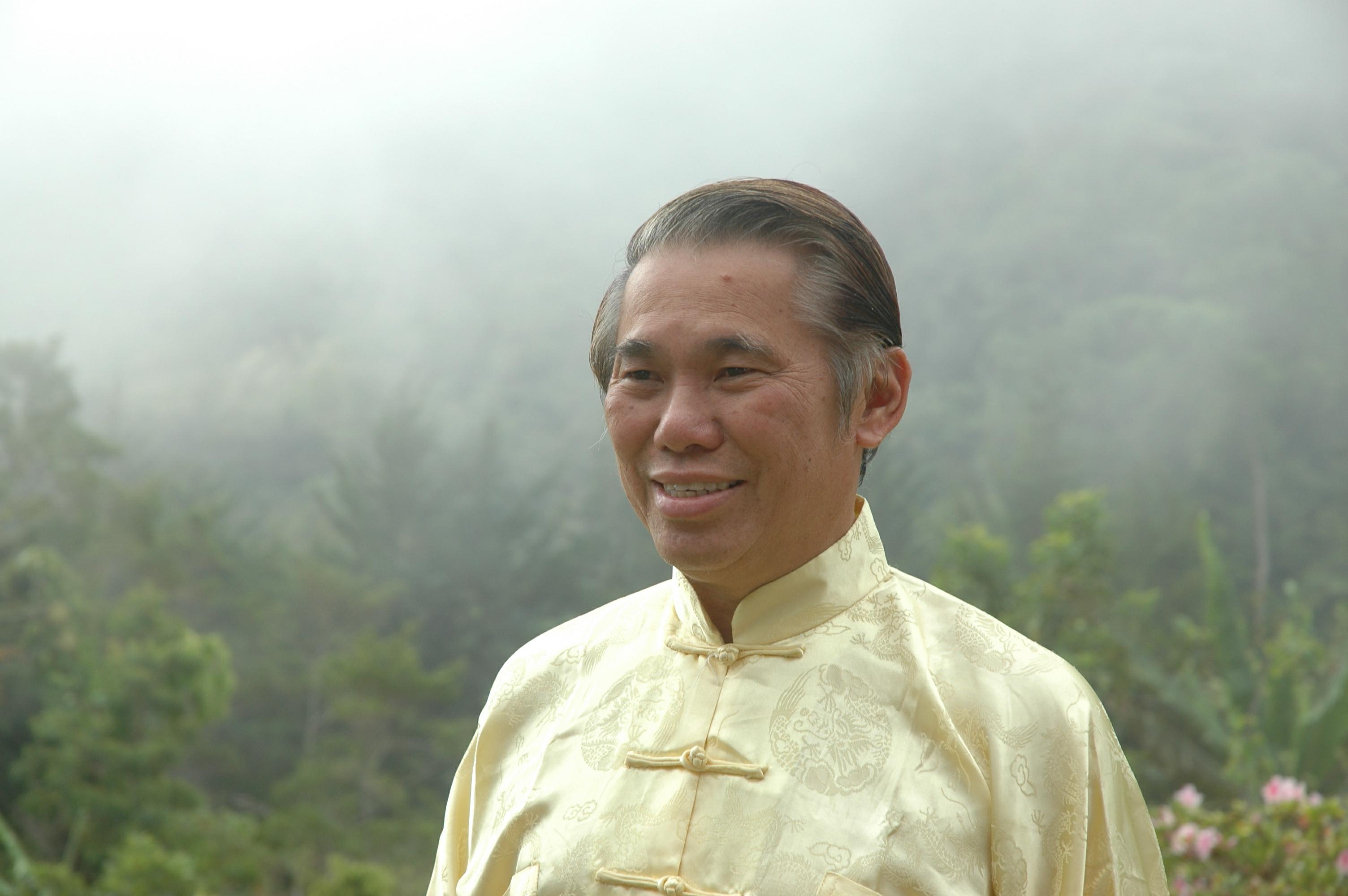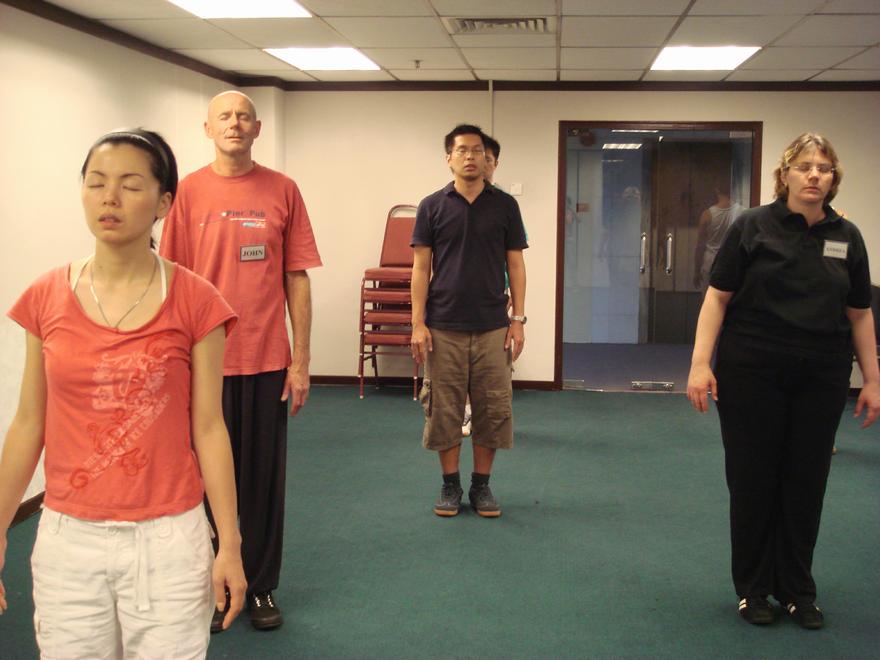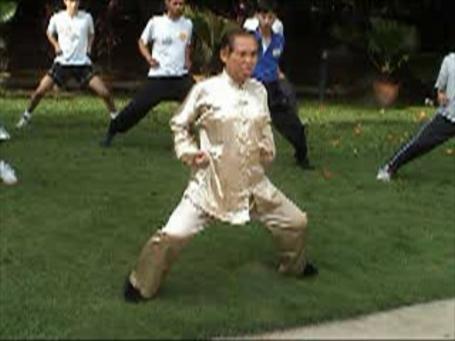SELECTION OF QUESTIONS AND ANSWERS
FEBRUARY 2014 PART 1

Grandmaster Wong Kiew Kit
Question 1
As mentioned on your website, the curriculum of the Chi Kung Healing Course during five days looks quite a lot. Could you advise what healing skills will be taught at the course?
— Jose, Spain
Answer
The healing skills to be taught at the Chi Kung Healing Course from 9th to 13th March 2014 in Kuala Lumpur, Malaysia are bafflingly simple, yet very profound. Any of our Shaolin Wahnam students who have attended an Intensive Chi Kung Course and willing to learn will be able to acquire these healing skills within the few days of the course! With these skills a Shaolin Wahnam healer will be able to help people overcome any illness, especially so-called incurable diseases!
Many people, even when they themselves are not doctors or therapists, but are used to long years of conventional medical training, which nevertheless fails to overcome so-called incurable diseases, will be very surprised at the skills to be taught at the Chi Kung Healing Course.
The three main skills to be taught at the course, which have enabled me to help countless people overcome their so-called incurable diseases over more than 20 years of healing experience, are:
- To convince patients it is worth their time and effort to regain their good heath. (This may sound ridiculous to healthy people, but many of those suffering from daily pain and so-called incurable diseases may prefer to die.)
- To convince patients that if they follow the prescribed healing procedure, they can be cured.
- Teach patients to generate a chi flow.
Unless his illness has gone beyond a threshold, which is a theoretical presumption and rarely happens, if a patient accomplishes the above three skills transmitted by the healer, his recovery form any illness is a matter of course. As a matter of fact, however, some patients may not be healed.
The difference between a matter of course and a matter of fact can be illustrated by an analogy. If you drive along the highway from Madrid to Barcelona, arriving at Barcelona is a matter of course. As a matter of fact you may not arrive if, for example, you stop on the way or drive off the highway. If a patient, for example, fails to practice daily, which is a requirement of the healing process, he may not be healed.
Again it may sound ridiculous but true that even if a healer trained in the course has forgotten all the theoretical knowledge mentioned in the curriculum but succeeds in accomplishing the above three skills, he can help people overcome so-called incurable diseases!
We have the skills and techniques to help people overcome so-called incurable diseases. It is "sinful" if such skills and techniques are not made available to deserving students.
Why are there still so many people in the world suffering from so-called incurable diseases? Apart from the fact that healers trained in our tradition are very few by comparison to the number of sufferers, there are three reasons as follows. The sufferers do not know about our healing, they do not believe in our healing even if they know, or they do not follow the healing procedure we prescribe.
The healing procedure is to practice the exercises we teach for about 15 minutes every day until they recover, which usually takes between three months to nine months, and sometimes just a few days. The exercises are simple to perform, and are certainly more pleasant than taking medical drugs.
The Chi Kung Healing Course is by invitation only. Only those who have attended an Intensive Chi Kung Course, or have practiced our arts in our school for many years, are eligible.
I am glad to offer the Chi Kung Healing Course at the Holistic Health Cultivation Centre in March to deserving students, who will undoubtedly help many people be to relieved from pain and suffering. I believe that in time chi kung healing will be the norm in overcoming illness.Question 2
You pay a lot of importance on entering into a chi kung state of mind. Can you please elaborate on it?
— Julio, Colombia
Answer
We start every course by entering into a chi kung state of mind. Why? It is because by doing so, we attain results faster and more by a very big margin, probably more than 10 times! We shall have a clearer picture by using some examples.
Let us take a chi kung class lasting an hour. If I teach exercises like "Lifting the Sky" and "Carrying the Moon" the way it is normally taught in other schools, students will be lucky to have 100 units of chi flow after 10 classes.
If I lead the same students into a chi kung state of mind first, then teach them exercises like “Lifting the Sky” and “Carrying the Moon” as I do now, they will have 100 units of chi flow in that class. In other words, without entering into a chi kung state of mind, the students need 10 hours to get 100 units of benefit. With entering into a chi kung state of mind, the same students need only 15 minutes to get 100 units of benefit!
Let us take a kungfu class lasting an hour, like a Shaolin class or a Taijiquan class. If I teach students exercises to develop internal force, like "Golden Bridge" and "Three-Circle Stance", the way it is normally taught in other schools, they will be lucky to have 100 units of internal force after 10 classes.
If I lead them into a chi kung state of mind first, then teach them the same exercises, they will have 100 units of internal force in the same class of 1 hour. In other words, without entering into a chi kung state of mind they need 10 hours to get 100 units of benefit. By entering into a chi kung state of mind they need only 1 hour to get 100 units of benefit!
Entering into a chi kung state of mind is a modern term. In the past, it was known as entering silence. In Shaolin context it was known as entering Zen, and in Taijiquan context it was known as entering Tao. Many people consider entering silence, entering Zen or entering Tao as advanced teaching, but we teach it right at the beginning.
Actually one cannot have a chi flow or develop internal force if he is not in a chi kung state of mind. That is why other students, if they are lucky, need 10 hours to get 100 units of chi flow or internal force, whereas our students can get 100 units of chi flow or internal force in just 15 minutes or 1 hour.
Inter-spaced in the 10 hours, other students enter into a chi kung state of mind for a few minutes without their conscious knowing and derive some benefit. Because this happens sporadically, they do not have the advantage of accumulated effect. They will be lucky if they can get 100 units of benefit in 10 hours.
We purposely enter into a chi kung state of mind and maintain it as best as we can to attain the desired benefit. We have the advantage of accumulated effect. Hence, we can get 100 units of chi benefit or internal force in just 15 minutes in a chi kung class or 1 hour in a kungfu class.

Dr Foong Tuck Meng, founder of Holistic Health Cultivation Centre which already has helped many people overcome so-called incurable diseases and will set the trend for healing in future
Question 3
Can we apply the chi kung state of mind in our daily life?
Answer
Yes, and we should, it will enable us to have better results no matter what we do.
Indeed, the greatest achievements of scientists, artists, scholars, philosophers, inventors and sportsmen were attained when they were in a chi kung state of mind, though they might not have heard of the term. To them it was a heightened level of consciousness.
There are different levels in the chi kung state of mind. The most fundamental level is to be focused and relaxed at the same time. At higher levels, we use our chi kung state of mind for other tasks, like massaging internal organs, letting chi to flow in our bones, and enjoying a cosmic shower.
When you are focused, you will produce better results than when you are distracted. When you are relaxed, you will produce better results than when you are stressful. When you are focused and relaxed at the same time, your results will be better many times.
Question 4
Must we always think of the dan tian to enter into a chi kung state of mind?
Answer
No, it is not necessary to always think of the dan tian.
Gently thinking of the dan tian is a good way to enter into a chi kung state of mind. But once we are in a chi kung state of mind, we can let go of the thinking.
There are also other ways to enter into a chi kung state of mind besides thinking of the dan tian, like focusing on an object, reciting a mantra, and being aware of one’s breathing. Scientists, artists and scholars often enter into a chi kung state of mind, or a heightened level of consciousness, by focusing on the task they are doing.
In our classes, the skill of entering into a chi kung state of mind is transmitted to the students directly. That is why they can achieve the skill so quickly. I just tell the students to be relaxed and not think of anything.

Chi kung state of mind
Question 5
If I start my kungfu session with "Lifting the Sky", should I have a 5-10 minute chi flow before I begin stance training?
— John, Korea
Answer
It is a very good idea to start your session with "Lifting the Sky", though you may also start with any other exercise.
You can have a 3-10 minutes session of chi flow before beginning stance training, or you can go straight to stance training immediately after Lifting the Sky. You can also practice stance training without performing Lifting the Sky.
Question 6
When I do stance training, should I be aiming to hold the Horse-Riding Stance for at least 5 minutes after I've practiced all the other stances for some minutes each?
Answer
This is a good procedure. Practice all stances, then complete with Horse-Riding Stance at the end of the stance training routine. This stance training session can be a part of your whole training session or the whole training session itself. You may or may not practice the Horse-Riding Stance earlier. In other words, the Horse-Riding Stance can be practice just once, or twice.
At the end of the stance training routine when you practice the Horse-Riding Stance, hold the stance as long as you comfortably can. Don't force yourself to hold the stance for five minutes if you can't. The secret of stance training is relaxation, not endurance. Eventually aim to progress to at least 5 minutes. You may later hold the stance comfortably for longer time if you like.

Horse-Riding Stance
Question 7
When I am doing the Horse-Riding Stance as part of practicing all the stances, should I only practice One-Finger Shooting Zen if I have already held the Horse-Riding Stance for at least 5 minutes.
Answer
Yes, initially just practice the Horse-Riding Stance. When you can comfortably hold the stance for 5 minutes, you can proceed to One-Finger Shooting Zen, if you like, while still on your Horse-Riding Stance. Or you can practice One-Finger Shooting Zen separately.
Question 8
Or, if I have held the Bow-Arrow Stance, and the False-Leg stance et al, for some minutes each, then can I go straight into One-Finger Shooting Zen when I start to hold the Horse-Riding Stance?
Answer
You can, in the sense that not only there is no harm but also there is some benefit. But you will get more benefit if you practice the Horse-Riding Stance. Perform the One-Finger Shooting Zen separately. However, if you are short of time and want to practice the One-Finger Shooting Zen, you can do so instead of the Horse-Riding Stance.
By now you would have noticed that there is no hard and fast rules about the procedure of practice, though the procedure I have mentioned above will give you the best benefits.
Because we have a lot of benefits from our practice, we can have the luxury of not worrying about the difference in benefit between adopting the best procedure and the worst procedure, so long as the worse procedure is still correct practice. In fact, even if we make some mistakes, we need not worry about them. Hence, the first of our three golden rules of practice is not to worry.
Mistakes here refer to mistakes made due to carelessness or forgetfulness, not mistakes made by a fool who purposely goes against instructions. For example, we know that we have to be relaxed when practicing stance training, but if we forget and tense our muscles, it is alright. We just relax when we realize the mistake. If we do not realize the mistake, that means we cannot correct it, it is still alright. Our chi flow will erase whatever harmful effect the mistake might have caused, and still gives us a bonus.
But if a person purposely tenses his muscles though he knows he should be relaxed, he is a fool. He thinks he is smarter than generations of masters who have specifically asked students to be relaxed. This fool is asking for trouble and heading for it.
Despite being repeatedly told not to worry, there are still some fools amongst our students. Luckily there are not many. They worry about unnecessary details like how straight their arms must be, at what exact point of time should they breathe out, or whether they should lift their tongue up against their palate.
We can afford not to worry, including whether we have chosen the best procedure or method, and whether we have made some mistakes due to carelessness or forgetfulness, but other students can't. It is because we have a lot of benefits from our practice, whereas other students don't. An example will make this clear.
If you have practiced perfectly, you can get 100,000 units of benefit. Suppose you have practiced very badly, but still correctly, you get only 10% of the potential, which is 10,000 units of benefit, as some of the benefit you may get is used up to erase the adverse effects of your mistakes.
But 10,000 units of benefit is still a lot when compared with just 2,000 units of what 80% of chi kung practitioners all over the world get. These other students cannot afford to make mistakes like you do. If they make mistakes, not only they do not get 2,000 units of benefit, their balance will be negative which means they would have harmful effects.
Now, is it reasonable to estimate that if other students get 2,000 units of benefit, you can get 100,000 when you practice perfectly. 100,000 is 50 times 2,000. In other words, is it reasonable that our chi kung is 50 times better than what other students practice?
Let us take the most important factor of chi kung as the criterion for comparison, that is chi flow. Our students can generate a chi flow on the first day of training. Other students cannot generate a chi flow after 50 days. In fact most of them cannot generate a chi flow regardless of how many years they have practiced. Hence, it is reasonable to estimate that if other students can get 2,000 units of benefit, our students can get 100,000.
LINKS
Selected Reading
- Chi Kung Healing Course
- How Chinese Medical Philosophy Can Enhance Western Medical Practice
- Is Chi Flow an Example of Borrow Body to Incarnate
- Specializing in Yang Style, Wudang or Flowing Water Floating Clouds
- 36-Pattern Tiger-Crane Set
